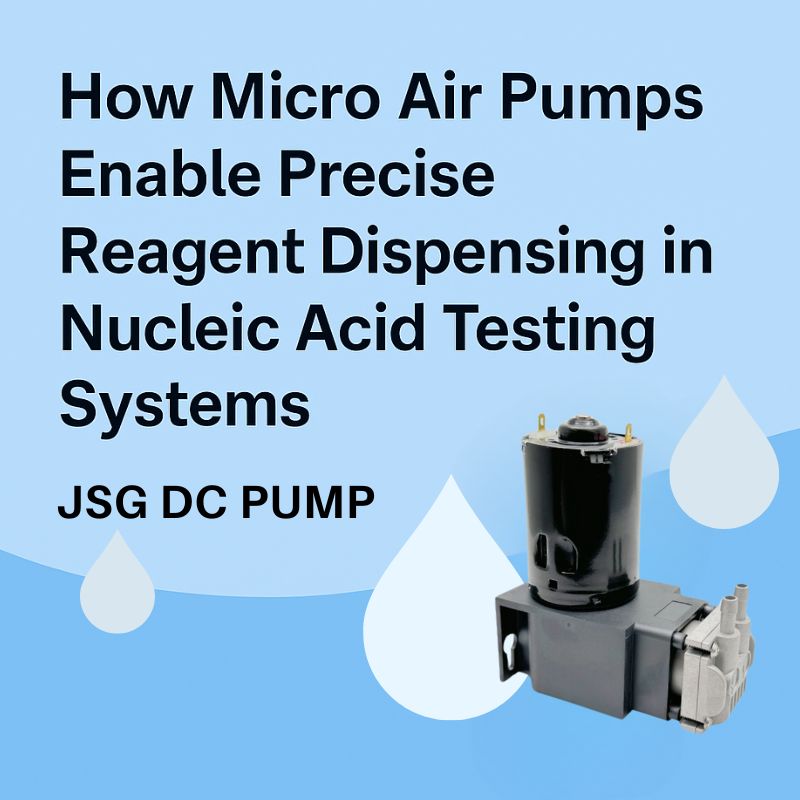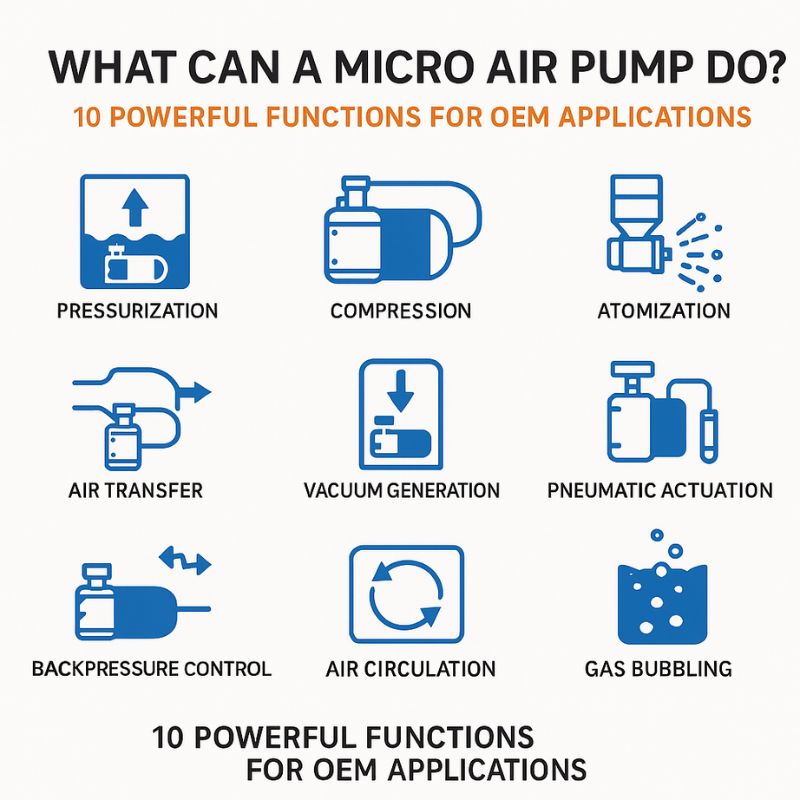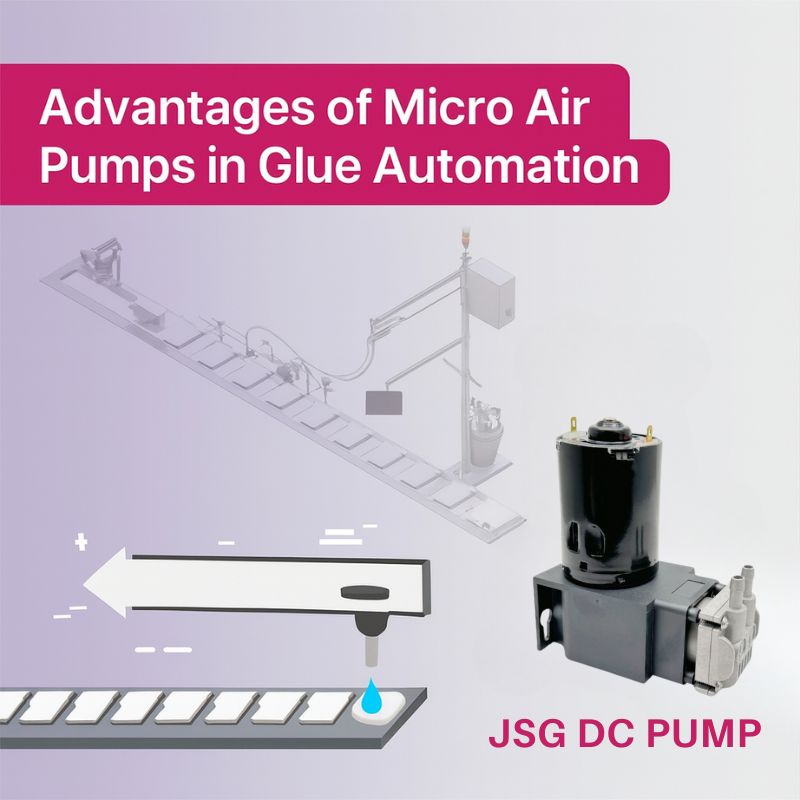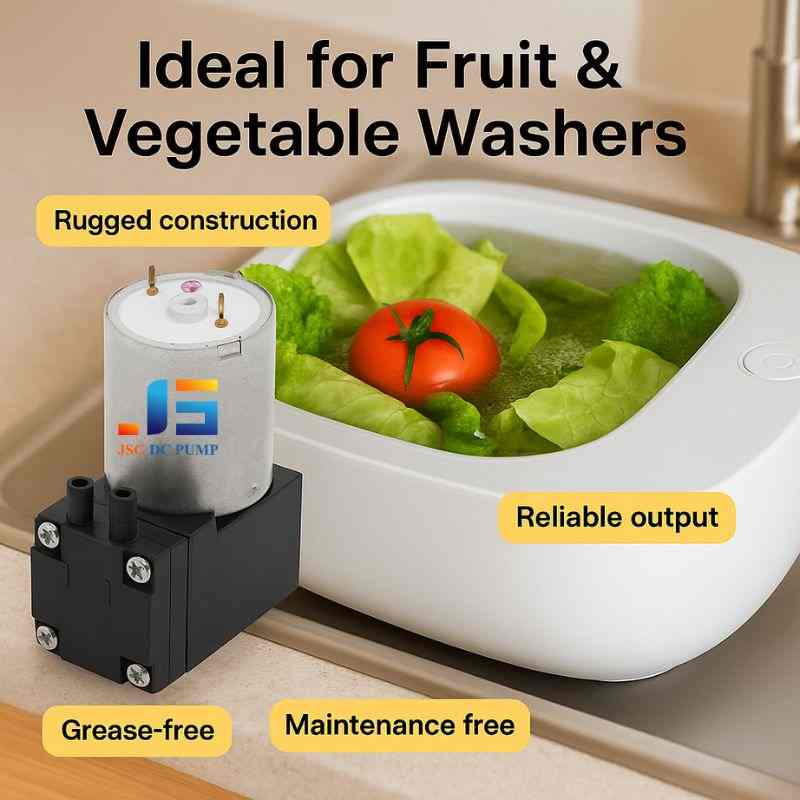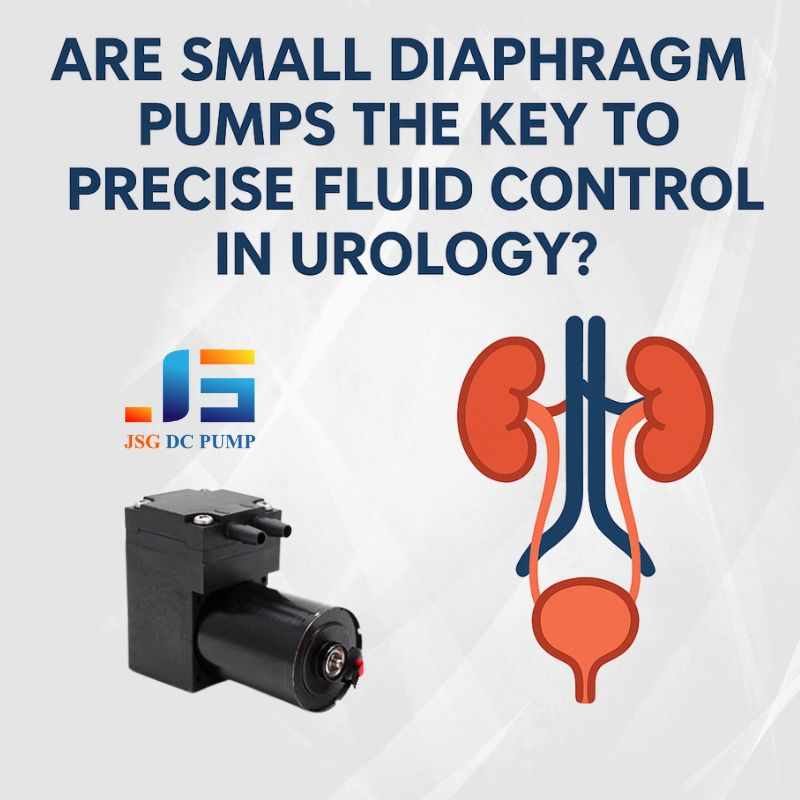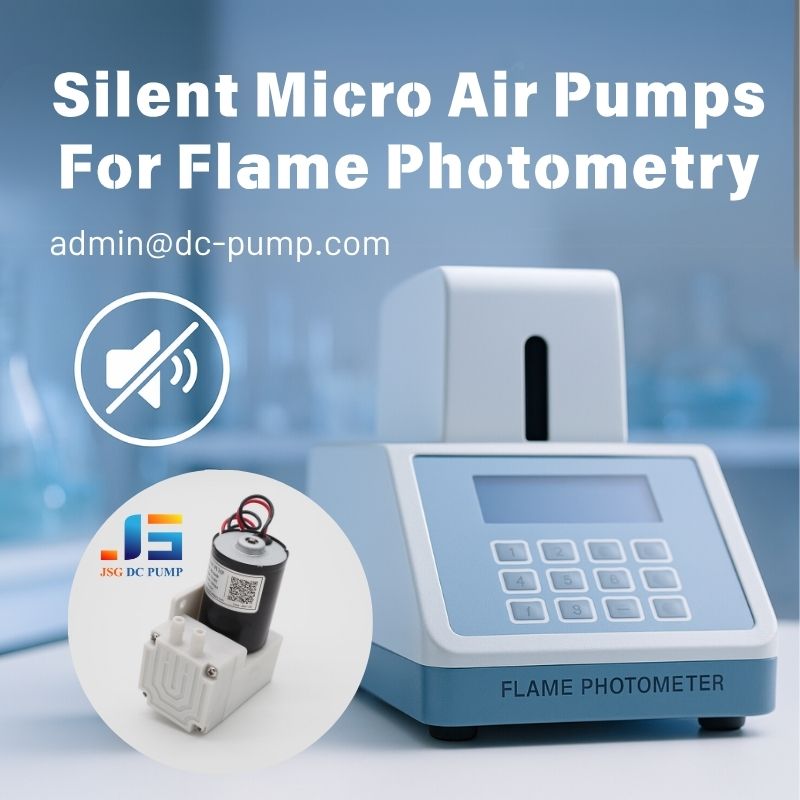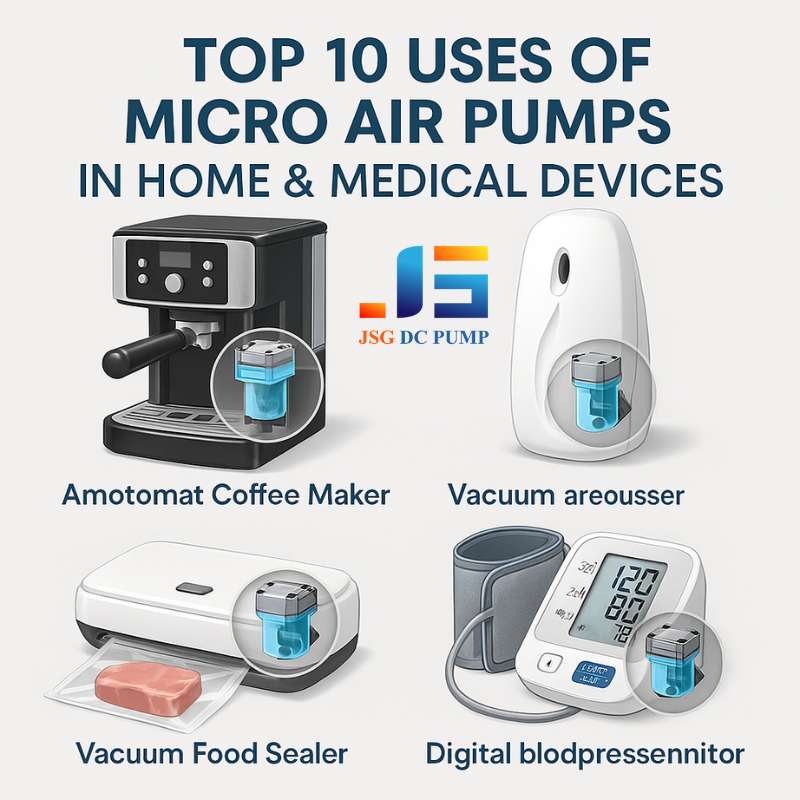Inaccurate reagent volumes can completely invalidate a nucleic acid test, wasting precious samples, reagents, and time. This makes the dispensing mechanism one of the most critical components in any automated analyzer.
Micro air pumps enable high-precision dispensing by using stable, positive air pressure to move reagents from sealed bottles. This non-contact method prevents cross-contamination, improves reliability, and allows for the fast, repeatable dispensing required for high-throughput laboratory automation.
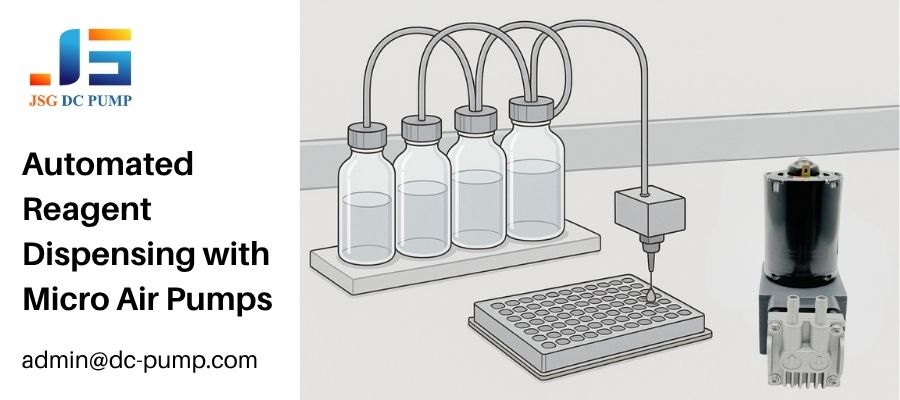
As an engineer at JSG DC PUMP, I’ve worked closely with designers of molecular diagnostic instruments for years. A recurring challenge they face is how to handle multiple, sensitive liquid reagents without contamination or mechanical failure. While traditional liquid pumps have been used, a more elegant and reliable solution has emerged: positive-pressure air systems. This method leverages a high-performance micro air pump to act as a clean, pneumatic “piston.” Let’s explore why this approach is becoming the gold standard in modern nucleic acid testing systems.
Why is Accurate Reagent Dispensing So Critical in Nucleic Acid Testing?
A minor dispensing error of just a few microliters seems insignificant. But in a process designed to amplify minute traces of genetic material, these small errors can lead to catastrophic failures and incorrect diagnoses.
Accurate reagent dispensing is critical because processes like PCR are exponential. Tiny initial variations in reagent concentration are magnified with each cycle, leading to unreliable, non-repeatable results and false negatives or positives.
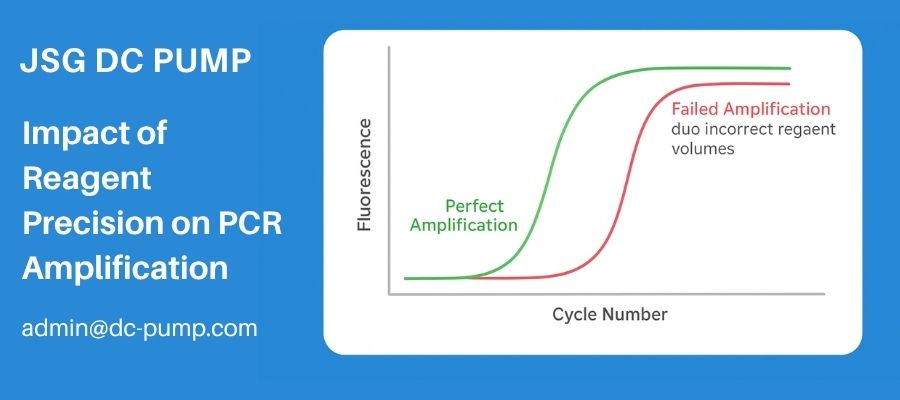
The entire workflow of nucleic acid testing depends on a precise sequence of chemical reactions. These systems handle various liquids, each with a specific purpose:
- Lysis Buffer: Breaks open cells to release genetic material.
- Wash Buffer: Cleans the sample to remove inhibitors.
- Enzyme Mix (Master Mix): Contains the core components for DNA/RNA amplification.
- Elution Liquid: Releases the purified nucleic acids for final analysis.
An error in dispensing any of these can ruin the entire test. Too little enzyme mix leads to failed amplification (a false negative). Too little wash buffer can leave behind contaminants, inhibiting the reaction. Inconsistent dispensing across multiple samples makes it impossible to achieve the repeatability that clinical and research labs demand. Precision isn’t just a goal; it’s a fundamental requirement.
How Do Positive-Pressure Micro Air Pumps Replace Traditional Liquid Pumps?
You need to move liquid, so the intuitive choice is a liquid pump. However, direct-contact pumps like peristaltic or syringe pumps introduce reliability and contamination risks that are unacceptable in sensitive diagnostics.
Positive-pressure air pumps replace liquid pumps by never touching the fluid. The pump introduces clean, compressed air into a sealed reagent bottle, precisely pushing the liquid through tubing without any direct mechanical contact.
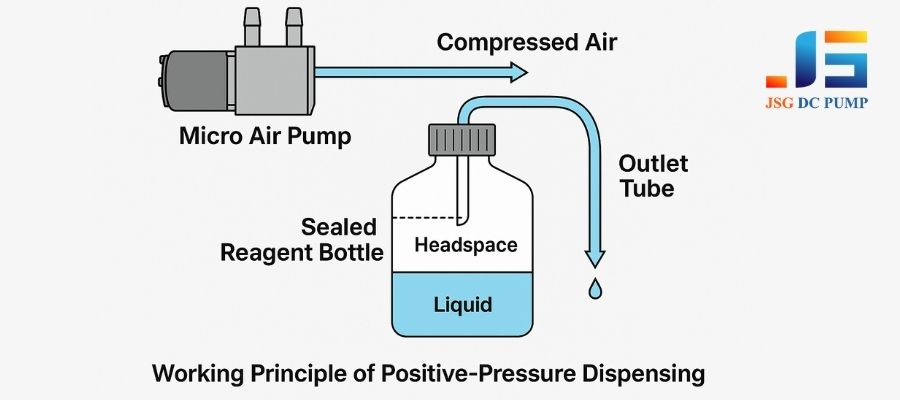
The concept is beautifully simple and robust. The micro air pump acts as the engine, providing controlled pneumatic power. This approach offers several key advantages over traditional liquid pumps:
- Zero Cross-Contamination: Since only sterile air touches the reagent, the pump itself can never become a source of contamination between different liquids. This is a massive advantage in systems handling multiple reagents.
- Lower Maintenance: There are no pump tubes to fatigue and replace (as in peristaltic pumps) and no complex seals or plungers to clean and service (as in syringe pumps). The system is mechanically simpler and more reliable.
- Faster Response: A high-quality air pump can build pressure almost instantly, allowing for very fast on/off cycles. This is perfect for the rapid, staccato dispensing actions needed in high-throughput automated testing.
What Are the Key Performance Requirements for Nucleic Acid Testing Applications?
Not just any air pump can be used for reagent dispensing. The demands of a lab instrument are far more stringent than a typical consumer device, requiring a component designed for precision and reliability.
For nucleic acid testing, the pump must provide exceptionally stable pressure for steady flow, be designed for intermittent high-speed operation, generate low noise, start instantly, and effectively manage heat.
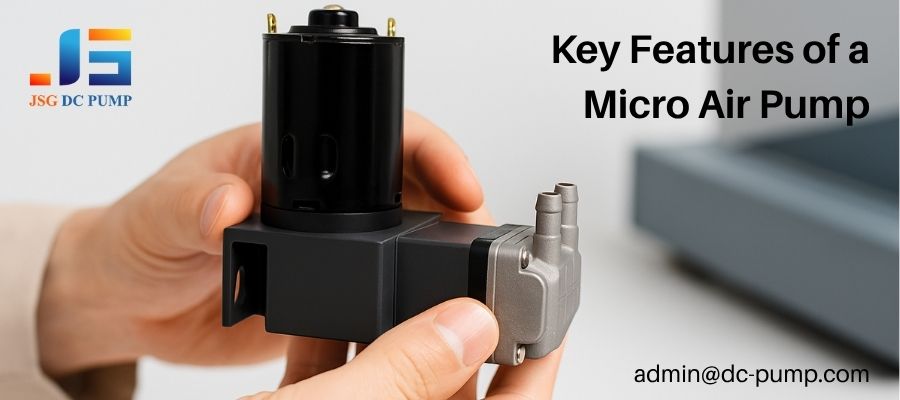
When our OEM clients design these systems, we focus on a specific set of pump characteristics that are non-negotiable for this application:
- Pressure Stability: Tiny fluctuations in air pressure will cause variations in the dispensed liquid volume. The pump must deliver a rock-steady output pressure to ensure consistent, repeatable dispenses from the first well to the last.
- Intermittent Operation: The pump doesn’t run continuously. It runs in short, rapid bursts—often with a duty cycle below 20%. The motor and mechanics must be designed to handle thousands of these on/off cycles without failure.
- Low Noise: These instruments operate in quiet laboratory environments, often with multiple units running side-by-side. Low acoustic noise and vibration are critical for user comfort and to prevent interference with other sensitive components.
- Fast Startup: In automated liquid handling, there is no time for the pump to ramp up. It needs to generate the target pressure instantly to ensure the first dispense is as accurate as the last.
Why is the JSG DC PUMP BD-079A-M Ideal for This Application?
Finding a pump that meets all these specific requirements can be a challenge. You need a model that has been engineered and proven specifically for the unique demands of high-throughput laboratory automation.
The BD-079A-M is ideal because its specifications are perfectly aligned with reagent dispensing needs. Its high pressure overcomes fluid viscosity, its fast-starting motor ensures instant response, and its metal head provides superior thermal stability.
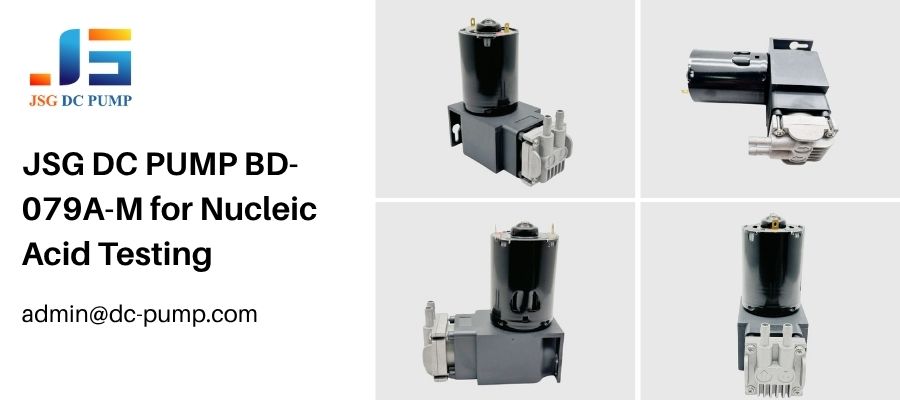
When we designed the BD-079A-M, we had applications like this in mind. Every key parameter was chosen to solve a specific problem faced by OEM instrument designers.
| Parameter | Specification | Benefit for Reagent Dispensing |
|---|---|---|
| Rated Voltage | 24.0V DC | Compatible with standard lab automation system power |
| No-Load Flow | >25 L/min | Can quickly pressurize reagent bottles or support multiple channels |
| Rated Pressure | ≥700 kPa (7 bar) | Powerful enough for viscous reagents and long tubing runs |
| Motor Type | DC Brushed (fast start) | Delivers instant torque for rapid pressure buildup |
| Pump Head Material | Metal | Excellent heat dissipation for stable performance and long life |
| Noise Level | Low | Suitable for quiet laboratory and medical environments |
The BD-079A-M’s proven performance in PCR and molecular diagnostic systems makes it a trusted, reliable choice for engineers who cannot afford to compromise on precision.
What is a Typical Working Scenario in a Nucleic Acid Analyzer?
It can be helpful to visualize how the pump integrates into the complete dispensing workflow. Let’s walk through a single dispense cycle in a typical automated system.
In a typical scenario, the pump pressurizes a reagent bottle, a valve opens to allow the pressurized liquid to flow to a nozzle, and the valve closes after a precise time to dispense an exact volume.
The sequence of operations is a beautifully timed dance of pneumatics and electronics:
- Pressurization: The system controller sends a signal to activate the BD-079A-M air pump. In a fraction of a second, it builds the target air pressure (e.g., 500 kPa) in the headspace of the sealed reagent bottle.
- Dispensing: The controller opens a specific micro-solenoid valve connected to the liquid line. The stable air pressure pushes the reagent from the bottle, through the valve, and out the dispensing nozzle into a reaction well.
- Stopping: After a precisely calculated duration (milliseconds), the controller closes the valve, instantly stopping the liquid flow. The volume is controlled by the constant pressure and the valve’s open time.
- Standby: The pump deactivates, and the system is ready for the next cycle, either for the same reagent or a different one.
What Are Some Integration and Design Tips for OEM Engineers?
Integrating a pump into a system goes beyond just mounting it. Proper control and system design are essential to extract maximum precision and reliability from the component.
To ensure precision, OEM engineers must carefully tune the pump’s pressure and the valve’s timing. It is also crucial to isolate vibration and use the correct electrical control logic for the pump.
From my experience working with engineering teams, here are a few key recommendations for a smooth integration and optimal performance:
- Volume Control: The most common method for controlling dispensed volume is “time-pressure dispensing.” Use a pressure regulator to set a stable air pressure, and then precisely control the open-time of your solenoid valve. A few milliseconds can make a difference.
- Noise & Vibration: Mount the pump using rubber grommets or vibration-damping brackets. This prevents the pump’s vibration from resonating through the instrument chassis, keeping the system quiet.
- Fittings and Tubing: Use high-quality fittings (barbed or threaded) to ensure an airtight seal between the pump and the reagent bottle. Any leaks will cause pressure instability and lead to inaccurate dispensing.
- Electrical Control: The BD-079A-M is a DC motor pump. It can be controlled with a simple on/off signal from a relay or MOSFET. For even finer pressure control, a Pulse Width Modulation (PWM) signal can be used to regulate the motor’s speed.
How Can JSG DC PUMP’s Customization and OEM Support Help?
Every automated system is unique. While a standard pump like the BD-079A-M is a great starting point, you may need a variation tailored to your specific pressure, flow, or form factor requirements.
JSG DC PUMP provides deep OEM support, offering customization of pressure/flow ratios, motor types, and mounting interfaces to create a pump that is a perfect fit for your instrument’s unique design.
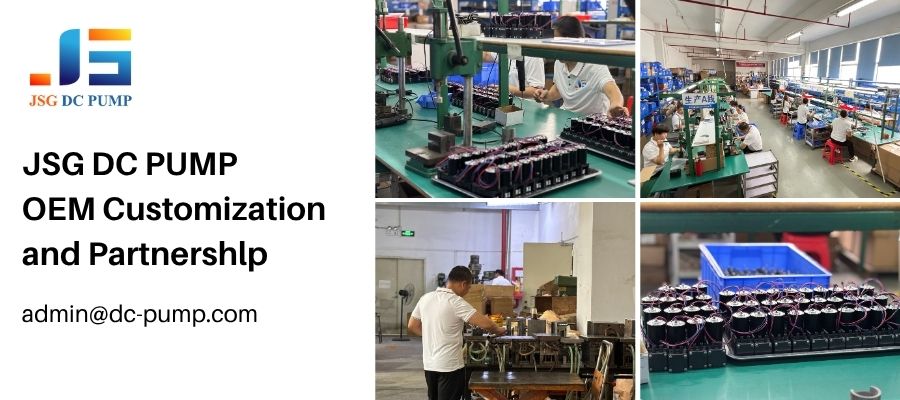
We see ourselves as a partner, not just a supplier. Our ISO9001-certified manufacturing process is built on a foundation of collaboration with our OEM clients. We can tailor our pump solutions to meet your exact needs. Common customizations include:
- Performance Tuning: We can adjust the motor winding and mechanical components to optimize the pump for your specific target pressure and flow rate.
- Motor Selection: While the BD-079A-M’s brushed motor is excellent for fast start-up, we can integrate a brushless motor for applications requiring exceptionally long operational life.
- Mechanical Interface: We can design custom mounting brackets, change the port types and locations, or modify the housing to ensure a seamless fit into your device.
Our experience in molecular diagnostics, reagent handling, and biochemical analyzers means we understand your challenges and can help you find the right solution faster.
Conclusion: Precision, Stability, and Trust in Every Dispense
The BD-079A-M micro air pump ensures high-precision reagent dispensing through its stable pressure control, reliable intermittent operation, and durable metal construction, providing the trust your diagnostic system requires.
For OEM integration or custom micro air pump design, contact the JSG Engineering Team at admin@dc-pump.com for a technical consultation.


